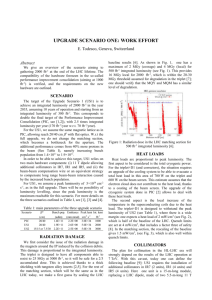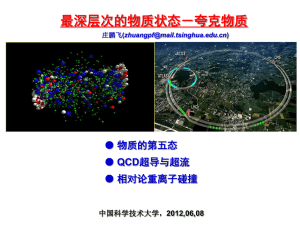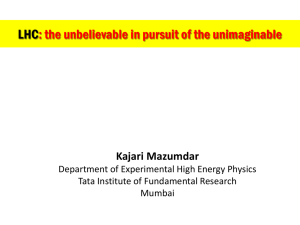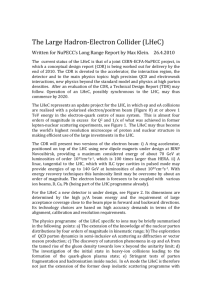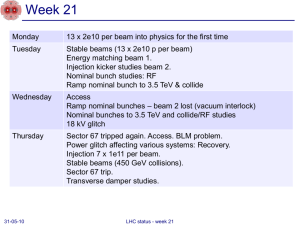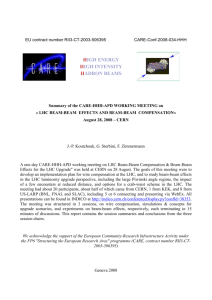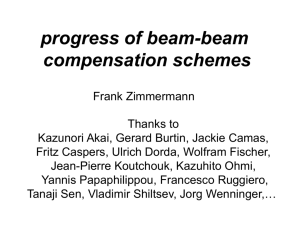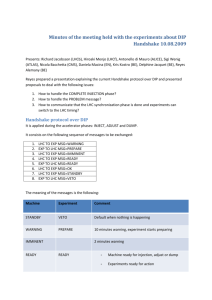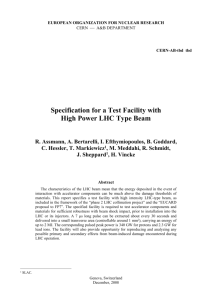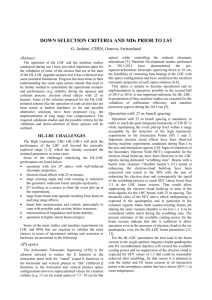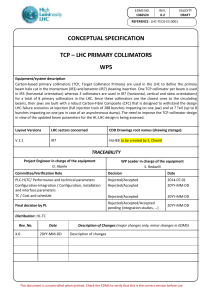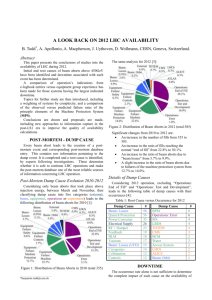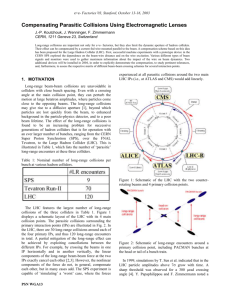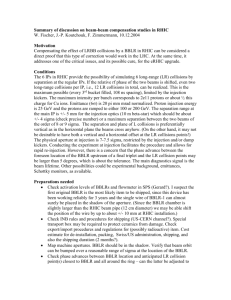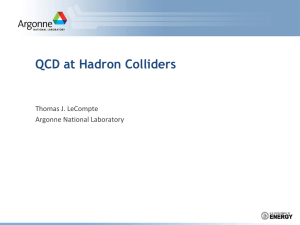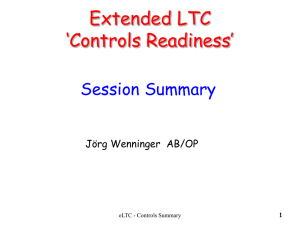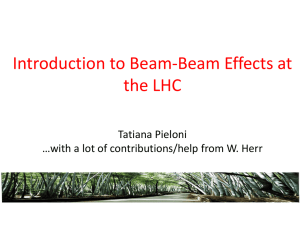Long-range beam-beam compensation at HL-LHC
advertisement
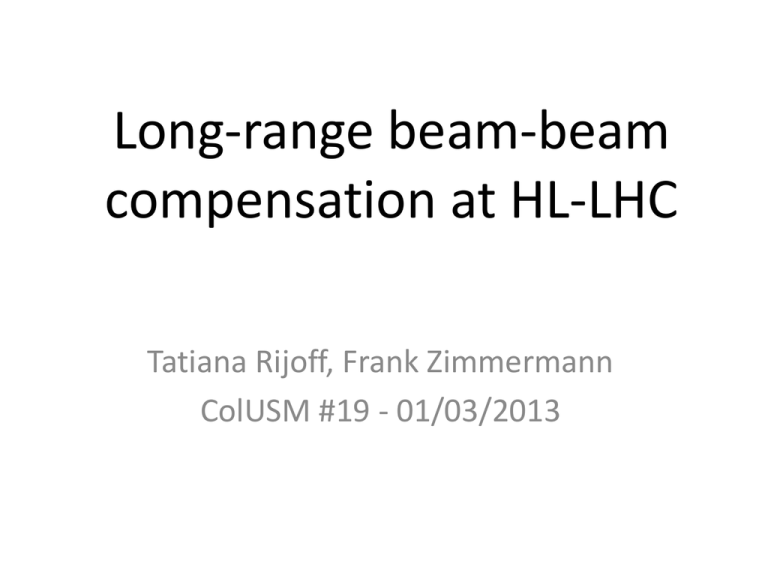
Long-range beam-beam compensation at HL-LHC Tatiana Rijoff, Frank Zimmermann ColUSM #19 - 01/03/2013 long-range beam-beam collisions • perturb motion at large betatron amplitudes, where particles come close to opposing beam • cause ‘diffusive aperture’ (Irwin), high background, poor beam lifetime • increasing problem for SPS, Tevatron, LHC,... that is for operation with larger # of bunches SPS Tevatron Run-II LHC #LR encounters 9 70 120 result of weak-strong simulations for LHC center of other beam Y. Papaphilippou & F.Z., LHC 99 ‘diffusive aperture’ Proposed Long-Range Beam-Beam Compensation for the LHC • To correct all non-linear effects correction must be local. • Layout: 41 m upstream of D2, both sides of IP1/IP5 Phase difference between BBLRC & average LR collision is 2.6o (Jean-Pierre Koutchouk) APC meeting, 19.09.03, LRBB J.P. Koutchouk, J. Wenninger, F. Zimmermann, et al. simulated LHC tune footprint with & w/o wire correction •.16s •.005s •.016s Beam separation at IP (Jean-Pierre Koutchouk, LHC Project Note 223, 2000) Frank Zimmermann, 2001 Beam-Beam Workshop, Fermilab SPS single-beam MDs with multiple wires 2002-2010 2x2 water-cooled units presently installed in the SPS (two with remote control) 1x2 spare units ready 1st RHIC BBLR stored at CERN 2nd RHIC BBLR being shipped J.-P. Koutchouk, G. Burtin, J. Wenninger, U. Dorda, G. Sterbini, F. Zimmermann, et al in total 5 sets available measured BBLR compensation efficiency vs. working point - scan around LHC tunes we scanned QY w/o BBLRs, with BBLR1 30.07.04 only, and with BBLR1 & BBLR2 3rd 10th 7th 4th what happens here? nearly perfect compensation compensate BBLR1 by BBLR2 for future wire LR beam-beam compensators, 3-m long sections had been reserved in LHC at 104.93 m (center position) on either side of IP1 & IP5 cs z R ; 2s x 1 2 1 Piwinski angle luminosity reduction factor nominal LHC HL-LHC ~1/b* minimum crossing angle from LR b-b k par N b 3.75m d da c 3 * 11 s 2 x 32 b 10 “Irwin scaling” coefficient from simulation note: there is a threshold - a few LR encounters may have no effect! (2nd PRST-AB article with Yannis Papaphilippou) minimum crossing angle with wire need dynamic aperture compensator of 5-6 s & c 8 b* independent of beam current wire compensation not efficient within 2 s from the beam center normalized crossing angle versus bunch intensity with LR compensation long range compensation will reduce the crossing angle wire compensation & crab cavities? wire compensator allows for smaller crossing angle and hence smaller b* for a given triplet aperture; it also reduces the required crab voltage (RF limits, machine protection issues,…) recent simulation results tune footprints Head on BBC Wire Head on Long Range TCT opt b Wire at 9.5 s – 177 A TCT mod opt T. Rijoff recent simulation results – unstable trajectories (Lyapunov) Head on BBC Wire Head on Long Range TCT opt b Wire at 11 s – 237 A TCT mod opt T. Rijoff


